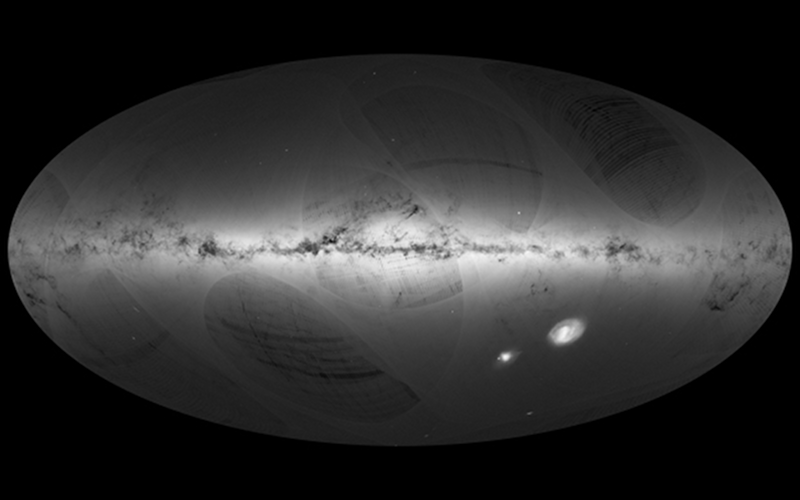If you are an astronomy buff, there are plenty of star maps you can find in print or online (or even on your Smartphone). But if you are a science fiction fan (or writer), you probably find those maps frustrating because they are flat. Two stars next to each other on the map might be light years apart in the axis coming out of the page. A star 3.2 light years from Sol (our sun) looks the same on the map as a star 100 light years away.
The Gaia satellite (an ESA project) orbits beyond the moon and is carefully mapping the 3D position of every point of light it sees. [Charlie Hoey] took the data for about 2 million stars and used WebGL to give you a 3D view of the data in your web browser.
We aren’t sure how practical it is and watch out for significant lag when you zoom if you have an older CPU and graphic card. But it looks interesting and is a good example of browser-based data visualization. You can read more about Gaia (or watch the video below) and note that they plan to map a billion stars. The sobering thing to note is that’s about 1% of the stars in the area of interest. The Gaia camera is technically interesting, as well (check out the second video, below).
If you want to look through a telescope, try SkyNet. Or you can try radio astronomy with no hardware if you like.















Where is “You are here ==>”
It would be more informative if our sun was included in the map. It was hard to find. Also would be nice if it could be limited to the “X” number of closest stars.
Just keep zooming in. Because this is correctly to scale, you have to zoom in for quite some time.
Darnit, it crashed my video card driver… pity; i’d love to watch it.
And now my video card is not working properly anymore. What the heck is that site doing?
PC diagnosis magic 8 ball says “GPU cooling marginal”
If you mean the GPU was already struggling to keep cool due to all the dirt and crud clogging up the fan, you are probably right. In any case, I’ve already replaced it although finding a PCI-E 2.0 card was not easy (the price of progress).
WebGL? Too bad….
That’s a pretty amazing satellite. Its angular measurement precision is just 7 microarcseconds (around ten thousand times better than the best optical scopes under earth’s atmosphere). It’s so precise that observations need to be corrected for “general-relativistic effects (light bending due to the Sun, the major planets plus some of their moons, and the most massive asteroids)” (direct quote). Gotta love their attention to detail: though the telescopes’ optics are entirely reflective (so, no lenses, no dispersion and resulting chromatic aberration), they correct for tiny chromatic aberrations due to diffraction effects.
Look like a layer of more dust was placed on my monitor screen, a layer that could be drug around with the mouse.Beyond that it is a staggering visualization of the number of stars.
There is no star 3.2 light years from earth. Alpha Centauri (Our closest neighbor) is about 4.3 light years away.
Well, yeah, but I meant that hypothetically and a Parsec is just over 3.2 LY. I don’t know for sure there are any 100 LY away either, although there’s a better chance that there is.
This is a fun diagram: http://www.atlasoftheuniverse.com/50lys.html
Proxima Centauri, a red dwarf is a tiny bit closer.